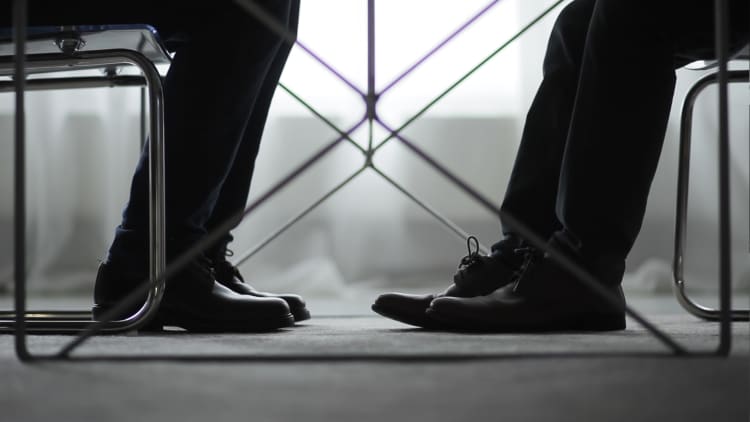You can pen the perfect speech and practice projecting your voice for hours, but your body language can have just as big of an impact on the message you're trying to convey as the actual words you speak. Research has even found that nonverbal cues can indicate the strength of their creativity.
Successful leaders like Bill Gates, Jeff Bezos and Tony Robbins all use non-verbal cues — including hand gestures and facial expressions — to their advantage. But what does all that pointing, gesturing, smiling and leaning really mean and what can you learn from it?
Body language expert Carole Railton analyzed popular TED Talks for "Leadership Signals," a project for The U.K. Domain, the U.K.'s largest domain registry. Here's what she found.
Bill Gates
Billionaire founder of Microsoft Bill Gates has done his fair share of public speaking — like giving graduation speeches at prestigious universities including Harvard and Stanford. His TED Talk in March 2015, "The next outbreak? We're not ready" (nearly 2.4 million views and counting), is defined by three major nonverbal cues, according to Railton: Holding his head high, repeating gestures and smiling.
During his TED Talk, Railton notes that Gates holds his hands above his waist and keeps his hands close to his body. "Opening and closing his arms effectively emphasizes his points and creates a sense of earnestness," Railton says.
As for his grin, Railton acknowledges that by smiling and looking around throughout the room, Gates is attempting to engage all members of the audience equally. "A warm smile and friendly facial expressions endear the audience to the speaker's passion," she says.
Jeff Bezos
Amazon founder Jeff Bezos, a.k.a, the richest man in the world, is known for leadership tactics like his inspirational annual shareholder letters and his clever recruiting strategies.
His body language during his February 2003 TED Talk, "The electricity metaphor for the web's future" (with about 1 million views), also conveyed strong leadership.
"Bezos opts for his own style rather than trying to copy someone else," Railton notes. "He leans to the left side of his body which conveys a natural confidence and a willingness to open up to the audience, and he leans into the audience indicating his need for them to listen and engage."
Other noteworthy, non-verbal cues that Railton points out include Bezos' "hand-on-chin" pose, which she says positions him as a "thinker," and his eyebrow raises during key moments in his talk, which Railton says, "invite the audience to listen."
Tony Robbins
Author and motivational speaker Tony Robbins certainly knows how to utilize body language while public speaking; he does it for a living. Railton analyzed Robbins' nonverbal cues for his TED Talk entitled "Why we do what we do," given in February 2006, which has almost 23 million views.
Railton found that he's direct with the audience, pointing toward them, which she says is a "confident and powerful gesture." He moves around the stage and utilizes all the space, she notes, and asks for interaction from the audience (such as getting them to raise one arm in the air).
Railton also points out that Robbins' gestures are purposeful. "Robbins touches his heart to show depth of feeling for his topic, and his head when he is talking about his thought processes," she says. "He opens and raises both his arms when making a point or posing a question and allows himself to be seen as open and emotional, endearing the audience to him."
Sheryl Sandberg
Facebook COO Sheryl Sandberg is known for metaphorically "leaning in" since her book, "Lean In: Women, Work, and the Will to Lead," was published in 2013. And when it comes to her body language while giving her TED Talk, she literally did that too.
Railton analyzed Sandberg's December 2010 TED Talk, "Why we have too few women leaders," which has more than 8 million views. She notes that Sandberg brings her hands together while on stage (conveying comfort and confidence) and guides the audience with strong gestures. Sandberg also leans toward her audience.
"Sandberg leans forward towards her audience, which shows her eagerness to relay information and strengthens her connection to them," Railton says. "Her movements are gentle and controlled, and her head protrudes from her body to signal that she is a thinker."
Don't miss: Wharton's top professor says America should shorten the work day by 2 hours
Like this story? Subscribe to CNBC Make It on YouTube!



